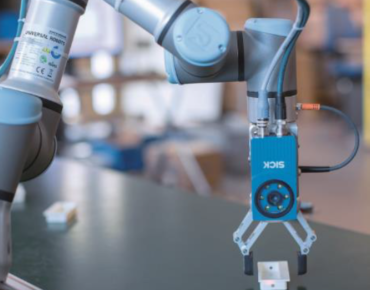AI Sensors, NLP Enter the Mainstream

Development and deployment of AI-based sensors has been rising steadily over the last several years as advancements in machine learning and computer vision allow early adopters to gather and analyze more data from AI sensors added to existing hardware.
A market forecast released this week by Lux Research also lists natural language processing as a key automation technology to watch in the coming year. Those and other forecasts add to the growing industry consensus that AI-driven technologies will help automate manufacturing tasks while edge deployments will be augmented by a new wave of AI sensor technologies.
Industry analysts note that relatively cheap sensors empowered with machine learning are poised to advance manufacturing and other industries while automating business processes. “Recent advancements in machine learning capabilities enable developers and operators to extract more value out of sensors,” said Cole McCollum, an analyst with Lux Research.
“This is an opportunity to create new products and improve internal processes by generating deeper insights off existing hardware,” McCollum added.
Along with aiding enterprise analytics efforts, the market tracker predicts the integration of machine learning with physical sensors will help generate ever-greater amounts of real-world data while being integrated with robotics and maturing technologies such as 3D printing.
“AI-enabled sensors can help bring businesses back to work,” added Michael Holman, vice president of research and author of the Lux Research report.
Lux estimates companies developing or using AI-enabled sensors have so far raised more than $1.8 billion in funding.
Other analysts have noted the growing capabilities of AI-based sensors. “One of the main developments we expect to see in coming years is a major shift in where inference—making predictions from trained models occurs—from the cloud to the edge,” market tracker 451 Research noted in a report released earlier this month.
However, those capabilities probably won’t fly using existing infrastructure. An emerging inference capability “presents infrastructure challenges that need to be resolved, especially where real-time inference is required,” the researcher added.
Industry observers also agree that natural language processing technology is ready for prime time. Lux Research lists NLP second only to autonomous vehicles on its rankings of technology megatrends.
According to 451 Research, NLP technologies used in devices like voice assistants, machine translation and chatbots are expected to find new use cases in the coming year. It also notes that NLP patents have jumped at a 44 percent annual rate over the last five years, with more than 3,000 new patents published annually.
Related
George Leopold has written about science and technology for more than 30 years, focusing on electronics and aerospace technology. He previously served as executive editor of Electronic Engineering Times. Leopold is the author of "Calculated Risk: The Supersonic Life and Times of Gus Grissom" (Purdue University Press, 2016).











